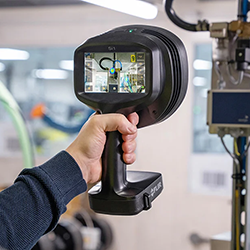Ready for Industry 4.0?
Russell Compact Sieve® skyrockets efficiency at New Balance additive manufacturing center
ManufacturingTomorrow - Special Tradeshow Coverage
MODEX 2018
Machine Vision Can Do More Than You Think
How Do Touchscreens Motivate Assembly Line Workers to Do Quality Work on Time?
Siemens invests in new 3D-printing facility in UK
Top Practices for a Top-Performing Production Floor
Three Industrial Internet of Things Macro Trends of 2018
The Many Uses of Bellows
New Story and ICON Unveil First Permitted 3D-Printed Home Created for the Developing World
How Automotive Manufacturers are Utilizing Augmented Reality
Swinburne to establish world first Industry 4.0 Testlab
Kerk Lead Screw Allows RPT Motion to Create Quick and Cost-Effective Case Packer
buildPl8 Manufacturing Launches Cloud Based 3d Printing Factory
Why Manufacturers Are Focusing on Cognitive and Predictive Asset Management
Records 1486 to 1500 of 1914
First | Previous | Next | Last
Engineering - Featured Product

